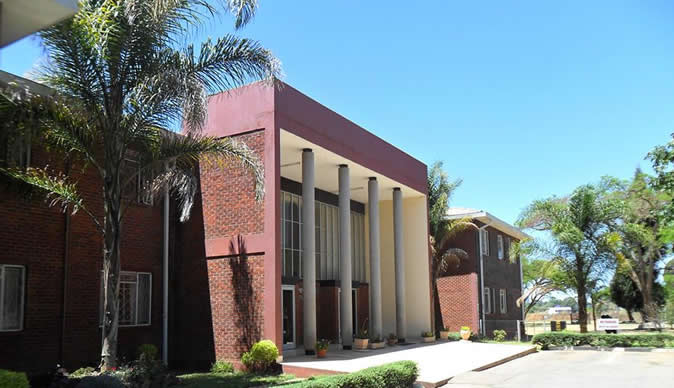Bulawayo schools top Zim charts . . . Province best at Grade 7, O-Level and excels at A-Level
By Pamela Shumba
BULAWAYO province recorded the highest overall pass rates in the 2014 Grade Seven and O-Level public examinations while posting exceptional results at A-Level.

An examination results analysis by the Ministry of Primary and Secondary Education shows Bulawayo may have the best schools in the country as it has been recording the highest overall Grade Seven pass rates for the past three years.
At O-Level last year, Bulawayo was the best province, posting a 29 percent pass rate against a national overall pass rate of 23,9 percent.
On second position, is Masvingo which recorded 27,22 percent, while Matabeleland South was third with 25,35 percent.
At fourth position is Harare province with 25,29 percent, followed by Manicaland, which recorded 24,62 percent, the Midlands with 24,24 percent and Mashonaland East with 24,11 percent.
Matabeleland North stands at position eight with 19,51 percent, and Mashonaland West follows with 19, 30 percent, while Mashonaland Central recorded the least pass rate of 19,24 percent.
At A-Level, Bulawayo is at position five with an impressive pass rate of 85 percent.
Mashonaland East recorded the highest pass rate of 88,60 followed by Masvingo with 88,82 percent, Manicaland with 86,36 percent and Mashonaland Central with 86,02 percent.
Matabeleland South is ranked sixth with 83,82 percent, followed by Midlands at 81,46 percent, Matabeleland North 81,4 percent, Harare 81,10 and Mashonaland West with 79,10 percent.
The combined national pass rate was 84,17 percent, marginally lower that the 2013 pass rate of 85,47.
The report notes that the national pass rate is higher than the Zimsec pass rate because the ministry’s analysis includes both the June and November examinations.
At Grade Seven, Bulawayo schools surpassed the 2014 national target pass rate of 51,2 percent when they recorded an impressive 84,62 percent pass rate compared to 82.87 percent for Harare and 62,2 percent for Masvingo.
Bulawayo, Harare, Manicaland, Midlands and Masvingo, surpassed the 51, 2 percent national target pass rate.
Mashonaland East, Mashonaland Central, Mashonaland West, Matabeleland South and North provinces performed below the target.
Matabeleland North was the worst performing school last year, after recording 39,95 percent, while Matabeleland South had 41,75 percent and Mashonaland West 45,23 percent.
The 2014 national pass rate, however, increased to 55,68 percent from 50,2 percent in 2013, surpassing the target by 4, 48 percent.
The overall pass rate in Mathematics increased significantly from 41,05 percent in 2013 to 52,21 in 2014 while marginal increases were recorded in other subjects.
Bulawayo provincial education director, Dan Moyo attributed the outstanding results to team work among school heads and teachers in the province and various initiatives.
He said the province has been producing the best results in the country since 2003.
“Firstly, it’s team work that has brought us this far. Our school heads and teachers work together and exchange ideas on how they can improve their results,” he said.
“They discuss the best ways to teach the pupils and make them understand and grasp concepts better.”
Moyo said the city’s schools started showing great improvement in the late 90s.
“We realised that although our results were good, other provinces were always ahead of us. We then introduced the provincial better schools programme, to motivate our teachers and pupils. Our performance gradually improved and from 2003 our results have been excellent,” said Moyo.
He added that the national Performance Lag Address Programme (PLAP), an initiative introduced to schools a few years ago to help slow learners catch up, was paying dividends.
Moyo said a bridging programme by the National University of Science and Technology (Nust) to teach pupils science subjects also contributed to good pass rates.
He said the province would continue working hard to maintain the good results.
In its analysis, the Ministry of Primary and Secondary Education attributed the good results by some schools to provision of adequate resources, availability and correct interpretation of syllabuses, availability of qualified teachers, having fully equipped libraries and better remuneration for teachers especially at trust run schools.
The ministry said factors contributing to poor results in some schools included lack of resources such as textbooks, classrooms and furniture, unavailability of qualified teachers, lack of external supervision, especially in remote areas, recycling of schemes of work by teachers and absenteeism by learners due to long distances to school.
The analysis also indicated that lack of comprehensive reading programmes, unavailability of syllabuses and overcrowding due to high enrolments were also contributing to poor results.
To improve the results, the ministry is planning to intensify supervision of teachers, book inspections, inspections of schemes of work, afternoon studies, holiday lessons for examination classes, staff development workshops among other strategies.
The Ministry last month announced that about 20,000 untrained teachers would lose their jobs as the government moves to implement the Teacher Professional Standards (TPS).
The standards call for the employment of qualified teachers at all schools. The Chronicle






